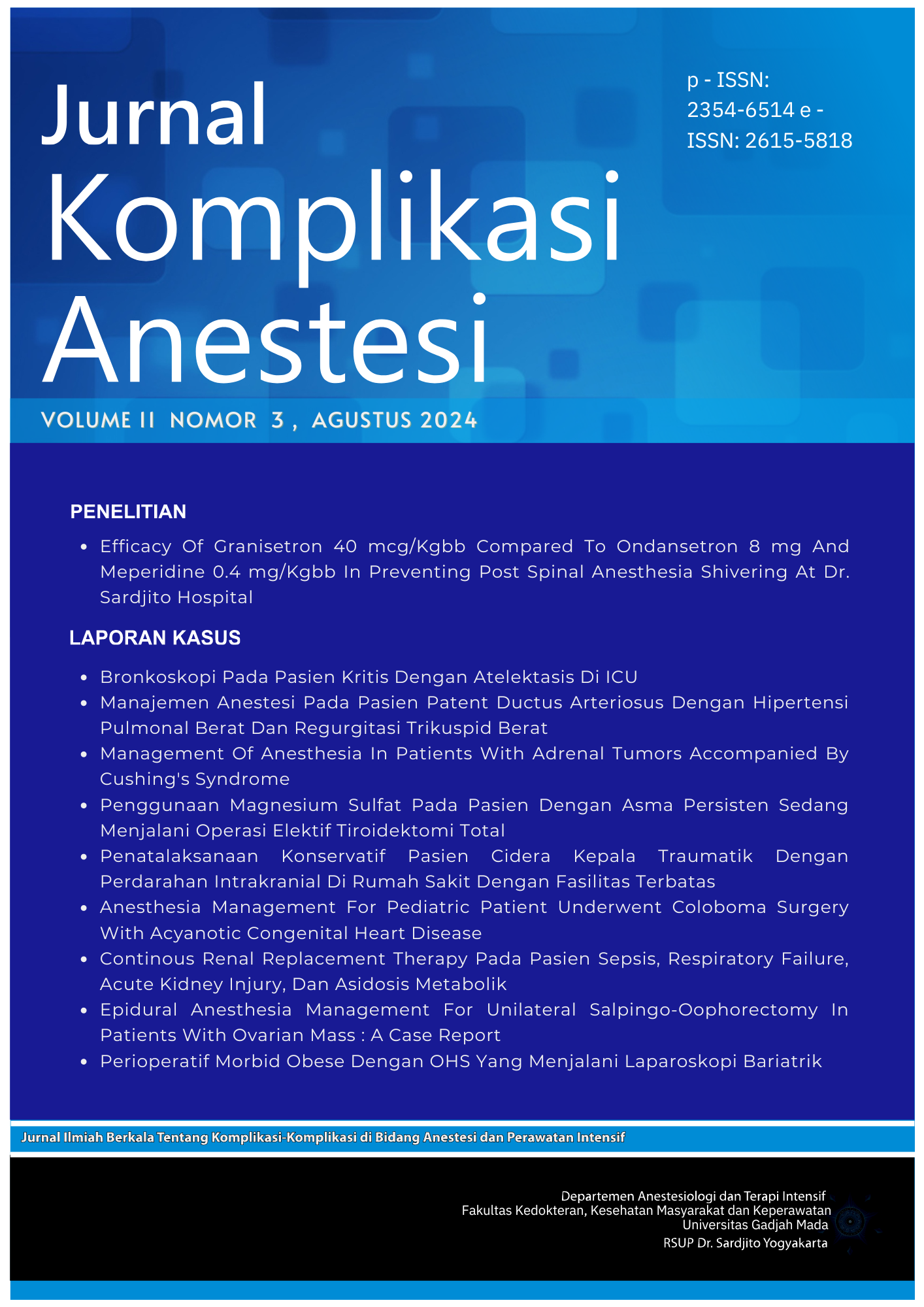Continous Renal Replacement Therapy pada Pasien Sepsis, Respiratory Failure, Acute Kidney Injury, dan Asidosis Metabolik
Abstract
Sepsis is a life-threatening organ dysfunction resulting from dysregulation of the body's response to infection. The hypermetabolic response results in an imbalance between oxygen supply to tissues while oxygen demand in peripheral organs increases. Acute Kidney Injury (AKI) is one of the most common and severe complications of sepsis, and is associated with high mortality and poor outcomes. If pharmacological therapy has been given but there is no clinical improvement, Continuous Renal Replacement Therapy (CRRT) with Continuous Venovenous Hemodiafiltration (CVVHDF) modality can be considered.
A 31-year-old male patient came with complaints of shortness of breath, the patient was diagnosed with septic shock accompanied by acute kidney injury and chronic kidney disease. The patient's condition worsened with unstable hemodynamics. CRRT is performed as an option for AKI management in critically ill patients with unstable hemodynamics. There was improvement in renal function, acidosis, and hemodynamics in patients.
Renal Replacement Therapy (RRT) is an option for treating AKI in critically ill patients with unstable hemodynamics. CRRT plays an important role in treating septic shock patients with AKI in the intensive care unit.
Copyright (c) 2024 Dendi Septian, Ezra Oktaliansah

This work is licensed under a Creative Commons Attribution-NonCommercial-ShareAlike 4.0 International License.
The Contributor and the company/institution agree that all copies of the Final Published
Version or any part thereof distributed or posted by them in print or electronic format as permitted herein will include the notice of copyright as stipulated in the Journal and a full citation to the Journal.

















